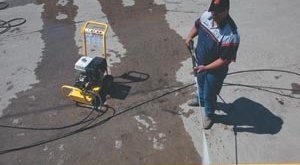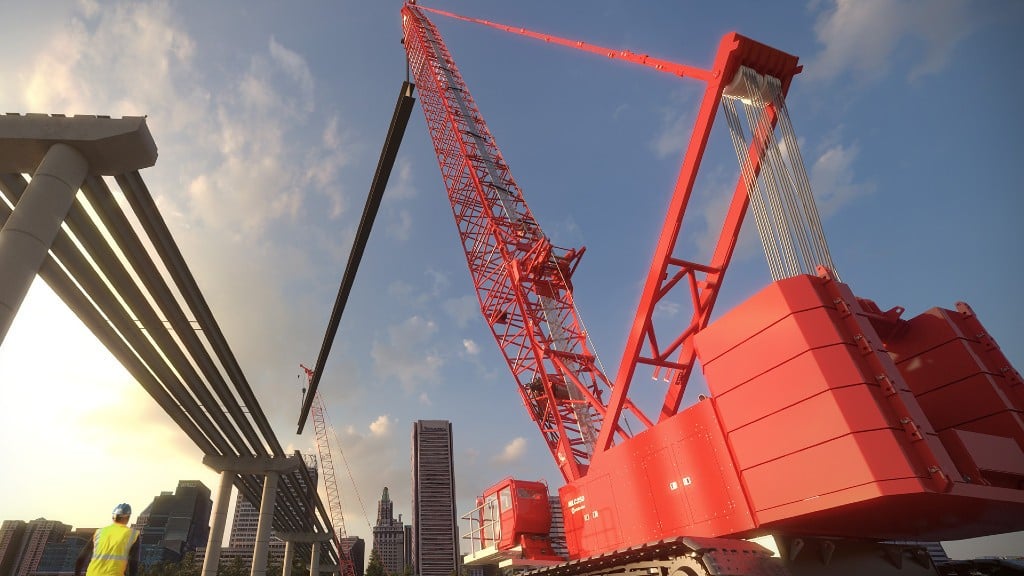Under pressure
Simple maintenance can extend the life of a pressure washer

It is present in countless shops from British Columbia to Nova Scotia. There it sits, the lonely piece of equipment in the corner, collecting dust after weeks, months, even years of neglect. The sad machine that stopped working perfectly one day was simply brushed aside to make room for a newer, shinier model. Sound familiar?
What is especially heartbreaking about this common tale is how many of these machines would still be working to their fullest potential had they received simple care and routine maintenance.
For a pressure washer, this scenario is especially upsetting. A machine that serves the purpose to clean and brighten being doomed to a life of gathering dirt and grime in a dark corner is just plain wrong. But this doesn’t have to happen. In fact, when properly maintained, a pressure washer can easily be expected to last anywhere from 5 to 10 and even 20 years. Armed with the knowledge of basic maintenance techniques, and how and when to perform them, anyone can save their pressure washer from a short, unfulfilling life.
First things first
Before beginning a maintenance program, one must first become familiar with the parts of the machine. Even someone who has been working with a washer for quite some time may not know what each part is and where it is located on the machine. While all pressure washers do not have the same parts, they all contain basics such as a pump, unloader, relief valve, hose, and gun assembly. They will also have either a motor or engine. Hot washers have extra parts that cold washers do not including a heating coil and float tank. For detailed descriptions and diagrams showing all parts of the machine, refer to the owner’s manual.
Also, considering it is a machine designed to clean, wouldn’t it make sense that the pressure washer itself should always be clean? It will be much easier to detect problems on a clean machine, such as hose damage and fluid leaks. Now proceed with the following tips, from basic to the more advanced, that novices and experts alike can perform to ensure their pressure washer stays in it for the long haul.
Before and after each use
It probably isn’t surprising to learn that it only takes a few minutes to inspect a pressure washer before every use. What is surprising is how much time and money these inspections can save if done regularly and thoroughly. Because these checks are quick and simple, they can be easily forgotten. However, they are very important, as they allow the user the opportunity to spot something that eventually could impede the performance of the washer, causing interruptions in operation.
Take a few minutes to inspect both the high-pressure hose and the supply hose for leaks, kinks, cuts and other abrasions or bulges. On electric units there is a GFCI drop cord that should also be checked for any visible damages.
Before starting the unit, always check the pump oil and adjust to the correct level if necessary. If the machine is gas powered, use this opportunity check the engine oil and fuel level as well, again making adjustments if necessary. Also, flush out the water system before installing the pressure tip at the end of the gun assembly to prevent any existing materials from clogging the tip.
When the washer is ready to be put away for the day, one more thing needs attention. If any detergent was used, be sure to clean out the soap compound by running clear water through the injector.
The not-so-everyday basics
While daily preventative maintenance is perhaps the best way to extend the life of a pressure washer, one must be sure not to neglect the less frequent procedures. Depending on how often the machine is used, these checks may need to be done weekly, monthly, or less often. The owner’s manual will provide specific maintenance timelines and details unique to each model.
First, check the hose and fittings for any water leaks. If a leak exists, it can be fixed by simply changing the hose or fitting. But remember, safety first. Shut the machine off before attempting to fix any leaks, as this leaking water is still under high pressure and can injure the operator.
Next, every machine has a pump. However, there are two different kinds of pumps: belt driven or direct driven. Direct driven pumps require less maintenance since they are directly mounted to the engine or motor. If the unit is belt driven, the user will need to check the belts occasionally for wear and tension and tighten if they have become loose.
For portable units, periodically inspect the tires. If necessary, give them a quick cleaning to remove caked on mud or other material. When they are free of grime and other debris, check to make sure they are properly inflated and appear to be in good condition. Use this time to check the bearing lubrication as well.
If the unit is powered by an engine, remember that the engine has maintenance requirements of its own, including oil and air filter checks. Refer to the owner’s manual for further information and specifics on how to keep the engine properly maintained and running at the highest efficiency possible.
It’s not too late
All this information on maintenance is really great, but let’s face it – most operators tend to take the New-Year’s-resolution approach to maintaining their pressure washer. And like all resolutions before it, maybe the user hasn’t quite lived up to the promise they made to check the pump oil and inspect all the hoses before each use.
This does not mean the pressure washer will be meeting an early demise. Many of the reasons why the unit isn’t performing at 100 percent can be corrected using some basic troubleshooting methods.
There are many different models of pressure washers, from electric vs. gas powered, cold vs. hot water, and oil vs. gas fired. Each will have its own unique set of problems, but in many cases a clogged or dirty part is the culprit, and a quick cleaning or replacement of the part will take care of the problem.
When the machine is running, strange noises will signal a variety of concerns. A noisy pump can indicate a few different problems, one being the possibility that the inlet screen and float tank screen are plugged. If this is the case, simply clean the screens to fix the problem. A noisy pump can also signal a lack of oil. If the pump oil level is correct, listen carefully to the noise, as different noises signal different problems. For instance, water that is too hot or a low water supply is often signalled by a chattering sound. Never let the water supply run low for an extended period of time. A vibrating noise can indicate air in the system or the possibility that debris is stuck in the valves. If it is the engine that is noisy, check the oil level and adjust to the proper level if necessary.
Another problem the engine can experience is a loss of power. In this case, a dirty or clogged air filter is most likely the problem. Check the filter and clean it, or if necessary, change it.
An area that may become clogged on hot washers is the heating coil. This is due to lime build-up inside the coil and happens when it is not cleaned regularly. To fix this issue, simply use cleaner to de-lime the coil, and water will flow at the correct level.
Remember, when troubleshooting, it is necessary to find the cause of a problem, not just the cure. For example, if the spray wand or hose is leaking, it may be that tightening the O-ring will temporarily stop the leak. However, if the ring is damaged, it must be replaced to avoid future leaks. Providing a temporary fix may be sufficient for the time being, but in the long run, preventing a problem from occurring again is the best way to eliminate any downtime and the need for repairs.
For how quick and easy it is, many people don’t give maintenance a single thought – that is until their machine stops working properly. Rather than waiting to deal with problems until they interrupt your work or require expensive repairs, consider sticking to a basic maintenance schedule. Your pressure washer will thank you by providing years of consistent, powerful service. And think of the space you will save by not having to banish another machine to that dark corner.


